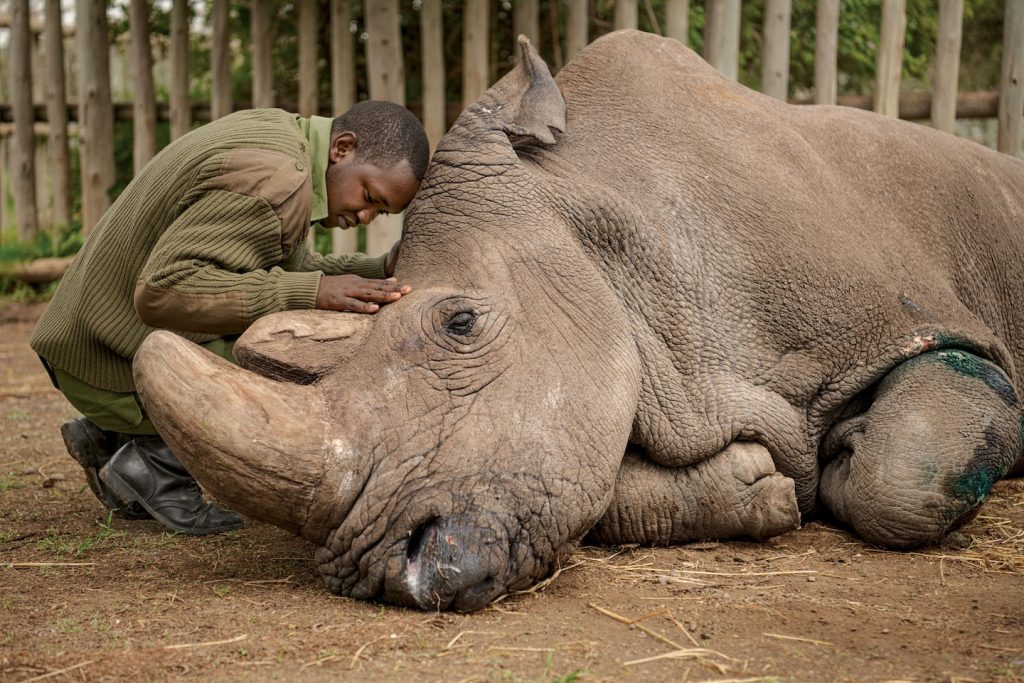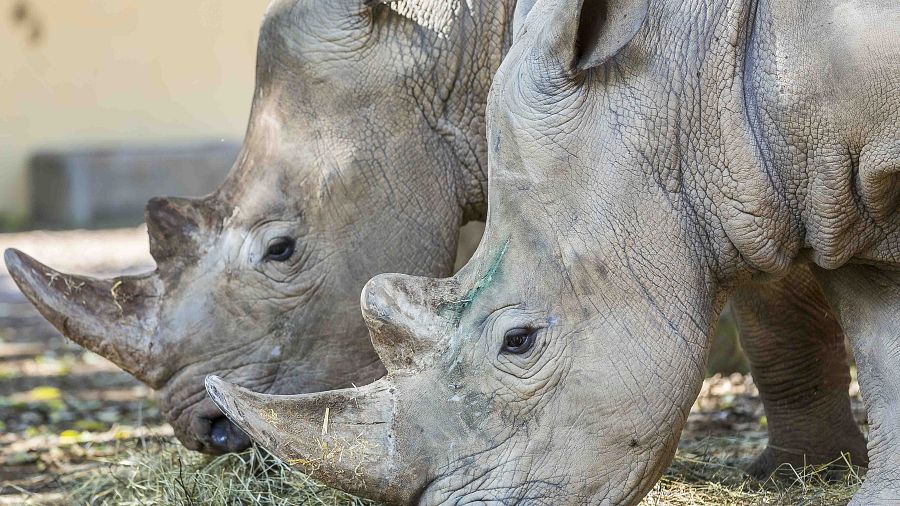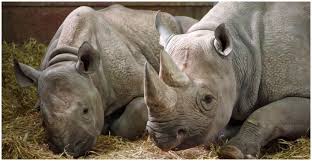
Definitely on the brink of Extinction ?: Northern Rhinos
It is with a heavy heart that l gotta write this. Only two Northern Rhinos left and they are in Kenya and they are females and can’t carry babies to terms. Scientists are trying to use incubation and using a Southern Male Rhino to keep the Northern Rhino alive!
So it begs the question how did we get here? Let’s think about the key events that led to the current situation with the Northern White Rhino. One major factor was poaching, right? The illegal hunting of rhinos for their horns led to a dramatic decline in the population. Another factor was habitat loss, as human development encroached on the rhinos’ natural habitat. And climate change also played a role, as it affected the plants and water sources that the rhinos depend on. So us humans are at fault as always when it comes to extinction of species. It’s worrisome how we just do things and worry about the consequences when we already on the brink of destruction. I am embarrassed to be human!
One key event is the killing of a Northern Rhino called Saut in 2006. So Saut was a Northern White Rhino living in the Garamba National Park in the Democratic Republic of Congo. In 2006, he was killed by poachers who were after his horns. Saut’s death was significant because he was one of the last breeding males in the population. And without breeding males, the population could not reproduce and replenish itself. It was a devastating blow to the survival of the species.
Of course the death of Saut was just one example of the ways that poaching impacted the Northern White Rhino population. But it’s not the only factor that led to their decline. Another major factor was habitat loss. As humans encroached on the rhinos’ natural habitat, they destroyed the plants and water sources that the rhinos relied on. This made it even harder for the remaining rhinos to survive and reproduce. And on top of all that, climate change was also affecting the rhinos’ habitat.
The political instability in countries where Northern White Rhinos live is a huge contributing factor to the species’ decline too!. Wars and conflict have made it harder to protect and regulate the rhino population. Political turmoil has also led to more people joining the illegal wildlife trade. The political aspect is a reality which is so often overlooked. A lot of people think of poaching as a purely environmental issue, but it’s much more complicated than that. It’s intertwined with complex political and social issues. Do you think there’s any hope for political stability in the places where the Northern White Rhino lives?
The remaining two Northern White Rhinos, Najin and Fatu, are in Kenya at the Ol Pejeta Conservancy. This is a protected area where they can live without the threat of poaching. However, Najin and Fatu are both female, so they can’t reproduce without the help of artificial insemination. Scientists are trying to use frozen sperm from deceased Northern White Rhinos to artificially inseminate Najin and Fatu.
Scientists are indeed are also experiment with Southern white rhino which is a closely related species. So they are attempting to use Southern White Rhino sperm to help Najin and Fatu reproduce. But this process is still in the experimental stage, and there’s no guarantee that it will work. Do you think it’s worth the effort, even if it might not be successful?
Even if the artificial insemination process doesn’t work, it’s still worth trying because the Northern White Rhino is so close to extinction. It’s better to try everything possible to save the species, rather than doing nothing and letting it go extinct.
Back to Basics of the Northern Rhino
The northern white rhinoceros is a grazer with a large, square muzzle. It prefers to graze on short grasses that are 7-10 cm (3-4 inches) tall and rests under shade trees. It is generally paler than other species of rhinoceroses. It lives in groups of up to ten and fights using its horns.
They aren’t white Contrary to their name, northern white rhinos are more of a dark grey color than white. According to the World Wildlife Fund (WWF), the name comes from the Afrikaans (a West Germanic language spoken throughout South Africa, Namibia, Botswana, Zambia, and Zimbabwe) word “weit,” meaning “wide.” The animal was originally described this way in reference to its wide mouth.
They are the smallest subspecies of White Rhinos White which are separated into two subspecies: Southern and Northern. Southern white rhinos weigh approximately 4,400 to 5,300 pounds, whereas northern white rhinos weigh 3,000 to 3,500 pounds. They have longer bodies, a more concave skull, and smaller teeth. Genetic research suggests that the southern and northern white rhino subspecies separated only 0.46 to 0.97 million years ago.

Given the gloomy conservation prognosis for northern white rhinos, it is startling to hear that white rhinos as a whole are not endangered. According to the International Rhino Foundation, southern white rhino populations have increased from less than 200 in the early 1900s to more than 20,000 as a result of conservation initiatives and protective measures imposed by local governments.Unfortunately, the northern white rhino has not been so lucky.

Although Northern White Rhinos are close to extinction, their relatives, southern white rhinos, have rebounded due to conservation efforts.-This shows that endangered species can be saved if given the right support.However, the situation for northern white rhinos is much more dire, and they may not be able to reproduce without human intervention.According to the International Rhino Foundation, southern white rhino populations have increased from less than 200 in the early 1900s to more than 20,000.
so be a dear and make a donation to the Ol Pejeta Conservancy